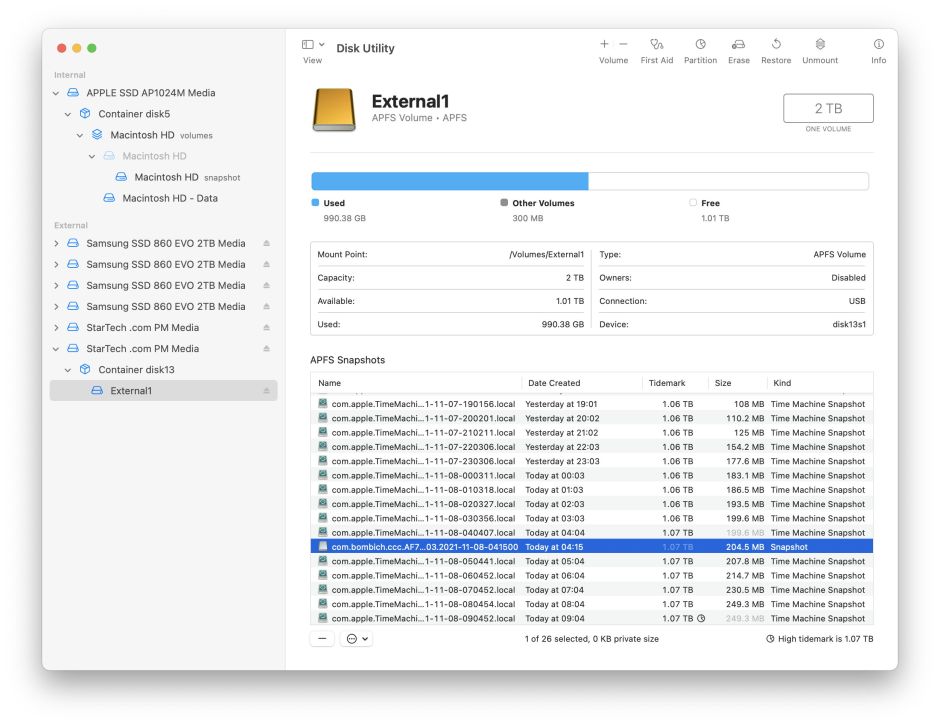As it’s getting towards the end of the year, I’ve been on the look out for nominations for the title of the most improved utility of the year. I’m delighted to announce not just a nomination, but an outright winner: Disk Utility 21.0, bundled with Monterey. After four years in which it had offered frustratingly limited support for the new features of APFS, Disk Utility is now complete: this version has excellent support for snapshots, no matter which app created them.

This new feature is cunningly hidden so that you don’t notice this huge leap forward when you first open the app. To engage its new powers, select a volume and use the Show APFS Snapshots command in its View menu. This opens a new table view in the lower part of the main view in which the selected volume’s snapshots are listed.

Although their order is fixed, with the most recent at the bottom of that table, you can customise the columns shown. Most important among those are the name, date of creation, and cumulative size. The most recent snapshot has a Partition symbol shown against its Tidemark, a value which isn’t explained in the Help page, unfortunately.
Select a snapshot from the list and you can mount it, show it in the Finder, rename it, and delete it, using the More button and the – tool at the bottom left. Deletion is irreversible, as you’d expect, and only to be undertaken when you’re certain that’s what you want to do.
Accompanying this is support for the listing and deletion of snapshots in the diskutil command tool. These commands have been added to the apfs verb there, so
diskutil apfs listSnapshots disk13s1
will list all snapshots, no matter what created them, on disk13s1. The command to delete a snapshot is deleteSnapshot. man diskutil, updated in January 2021, provides additional detail. (Thanks to Pico for pointing out that I hadn’t noticed these commands, which have apparently been there for some years. But the man page has still been updated, honest!)
These enable you to maintain snapshots and to copy items from them. Restoring a whole volume from a snapshot should normally be performed in Recovery. The remaining technique using snapshots is copying them to another volume. Although this might appear simple, copying the file system metadata of the snapshot itself is of no use, and it needs to be accompanied by the data referenced by the snapshot. Currently, that’s only available as part of the mechanism by which Time Machine backs up to APFS. Maybe one day that will be mature enough to be added to Disk Utility.
Congratulations to the engineers at Apple who have finally made Disk Utility complete. It has been a long journey, but Disk Utility has finally arrived.
I’m very grateful to Miles, for pointing this out.
